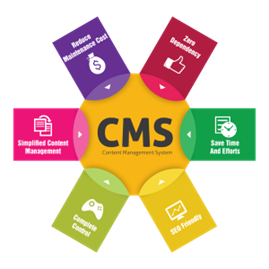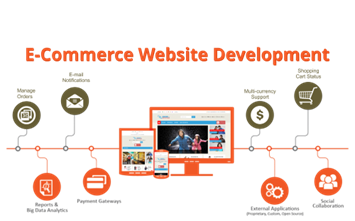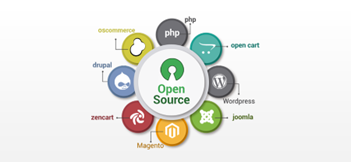
Types of Web Development Services in Singapore
A well-structured website with a clear hierarchy supports SEO efforts and enhances user engagement and conversion rates. A website’s development can greatly improve its performance in search engine rankings, load time, and mobile responsiveness, which are important in a digital marketing strategy. This article will explore the various web development services available and discuss how they contribute to a website’s overall effectiveness in Singapore’s market.
Understanding Web Development
Web development is building and maintaining websites to look great, work fast, and perform well with a seamless user experience. This includes several aspects: web design, programming, database management, and server configuration.
The scope of web development ranges from creating simple, static web pages to complex web-based applications, social network services, and electronic business applications. It can involve the development of a simple single static page of plain text, complex web applications, and anything in between.
Web development roles are typically divided into three categories: front-end developers who specialise in website design and user interface, back-end developers who work on servers and databases, and full-stack developers who can handle front-end and back-end tasks.
Types of Web Development Services
Front-End Development
Front-end development refers to creating the graphical user interface of a website through which users interact with the website. This web development aspect concerns how a site looks, feels, and behaves in response to interactions. It’s about translating the raw code into the visual elements that form the user’s experience.
Front-end developers are tasked with a website’s layout, design, and interactivity. Their responsibility is to build interfaces that help users achieve their objectives efficiently. They must ensure the website is accessible with the right layout, colour, typography, and responsive design. Key responsibilities include:
- Implementing design on the web through HTML, CSS, and JavaScript
- Ensuring cross-browser and cross-platform compatibility
- Making sites interactive and engaging with front-end scripts and frameworks
- Optimising the web pages for maximum speed and scalability
- Utilising SEO principles to guide the website’s technical development
- Testing the site for usability and fixing any bugs
A front-end developer must be attentive to user feedback and update the interface to improve usability. The layout must be thoughtful, with smooth navigation and clear actions to prevent user frustration. Accessibility is also a priority, ensuring that content is available to users with disabilities, which is also a factor in SEO. The tools used by front-end developers include:
- HTML (HyperText Markup Language): The standard markup language used to create and structure sections, paragraphs, and links on a web page.
- CSS (Cascading Style Sheets): Used for designing and customising the look and feel of a website, including the layout, colours, fonts, and more.
- JavaScript: A scripting language that enables interactive web pages. It’s used for client-side page behaviour.
- Frameworks and Libraries: React, Angular, Vue.js, jQuery, and others that facilitate faster and more efficient development of complex applications.
- Responsive Design Tools: Such as Bootstrap or Foundation, which help in creating websites that adapt their layout to the viewing environment.
- Version Control/Git: Allows developers to keep track of changes made to the codebase and collaborate with others.
Back-End Development
Back-end development, or server-side development, focuses on elements that occur on the server and database level. It involves writing the code and scripts to make all the user interactions possible.
The back-end of a website is where the application, server, and database communicate with each other. The back-end developer’s role is to create and maintain the technology that powers those components, which, together, enable the user-facing side of the website to even exist in the first place. Core functions include:
- Developing and managing the technology that processes user commands.
- Creating server scripts and application programming interfaces (APIs) used by front-end developers.
- Managing and administering the database to ensure it provides the necessary data to the front end.
- Ensuring that the server, the application, and the database run smoothly together.
- Implementing algorithms and solving system-related problems.
- Keeping data and the backend secure from unauthorised access and cyber-attacks.
Back-end developers also need to be able to create schemas, safely interact with the database, and write codes that allow the front end to fetch and display the correct data. Their role ensures the integrity and security of data, contributing to a trustworthy user experience. Several programming languages and technologies are used, and those include:
- Node.js: A JavaScript runtime that allows developers to execute server-side code.
- Python: Known for its readability and efficiency, it is often used with frameworks like Django and Flask.
- Ruby: A language that emphasises simplicity and productivity, often paired with the Ruby on Rails framework.
- Java: A widely-used language known for its portability across platforms and extensive libraries.
- PHP: A scripting language that’s easy to learn and widely supported, often used with WordPress.
- SQL databases such as MySQL, PostgreSQL, and Microsoft SQL Server use structured query language for defining and manipulating data.
- NoSQL databases like MongoDB, CouchDB, or Cassandra are often used for large sets of distributed data.

Content Management System (CMS) Development
Content Management Systems (CMS) are software platforms enabling users to create, manage, and modify website content without specialised technical knowledge. It helps developers to build a website without needing to write all the code from scratch. There are several popular CMS platforms, each with features and capabilities designed to cater to different needs. Here are a few examples:
- WordPress: By far the most popular CMS, WordPress is known for its ease of use, extensive plugin ecosystem, and large community support. It’s versatile enough for simple blogs to complex websites.
- Drupal: Known for its strong security features, Drupal is a robust CMS with extensive tools for content organisation and taxonomy. It’s ideal for complex sites with large volumes of content.
- Joomla!: Offering a middle ground between WordPress and Drupal, Joomla! has both flexible content management capabilities and a strong template system, making it a solid choice for various websites.
Customisation is one of the key components of CMS development. It involves tailoring the CMS to the site’s design and functional requirements. Customisation can range from developing a unique theme that controls the website’s visual presentation to creating custom plugins or modules that add new features or functionalities.
- Theme Development: This is about creating a custom look and feel for the website. Themes control the website’s layout, colour schemes, typography, and other design elements. Developers will create a theme that reflects the brand’s identity and meets usability and accessibility standards.
- Plugin Development: Plugins extend the functionality of the CMS. They can be as simple as a contact form or as complex as an e-commerce system. CMS developers often create custom plugins to meet unique requirements that can’t be met with existing plugins or integrate third-party APIs.
Developing a CMS also requires being scalable, secure, and SEO-friendly. A well-developed CMS allows easy content updates to keep a website fresh and relevant—an essential aspect of successful digital marketing. It should provide an intuitive interface for users to manage content effectively without compromising the performance or security of the website.

E-commerce Development
E-commerce development refers to building an online platform to buy and sell goods and services. This involves crafting a visually appealing layout and constructing a robust, secure, scalable system for products, customers, and transactions. The design and development of an e-commerce website entail several key considerations:
- User Interface (UI): The design of the e-commerce platform should be attractive and engaging, but more importantly, it should be intuitive and easy to navigate to minimise cart abandonment rates.
- Product Display and Features: Clear and detailed product pages are crucial. This includes high-quality images, detailed descriptions, product variations, and prices.
- Responsive Design: The website must be accessible and fully functional across all devices, especially mobiles, as many consumers shop on smartphones.
- Performance: E-commerce websites should load quickly and perform seamlessly to prevent the loss of potential sales.
- Scalability: The online store must grow with the business, handling an increasing number of products, categories, and transactions without a drop in performance.
Successful e-commerce development requires strong web development skills, a keen understanding of digital marketing principles, and an acute awareness of the customer journey. By creating an online shopping experience that is user-friendly, secure, and reliable, businesses can significantly enhance their ability to attract and retain customers. A component of e-commerce development is the integration of payment systems and shopping cart software, which involves:
- Payment Gateway Integration: Secure payment gateways are integrated to facilitate transactions. This could include credit/debit card processing, PayPal, Stripe, or other payment services.
- Shopping Cart Functionality: The shopping cart must be robust and capable of handling various tasks such as adding items, adjusting quantities, applying coupons, calculating taxes, and shipping costs.
- Security: Given the sensitive nature of transactional data, security is paramount. SSL certificates, data encryption, and compliance with payment card industry (PCI) standards are critical.
- User Accounts and Profiles: Users typically can create an account to manage their orders, track shipping, and handle returns more efficiently.
- Checkout Process: A smooth and straightforward checkout process is vital. This involves reducing the number of steps to purchase, providing clear instructions, and offering guest checkout options to improve conversion rates.
Mobile App Development
Mobile app development is creating software applications that run on mobile devices. With the rise in mobile devices, apps can help with customer engagement, streamline operations, and tap into new revenue streams.
With functionalities like push notifications, in-app purchases, and tailored loyalty programs, apps forge an interaction channel between the users. These tools facilitate immediate communication and encourage active participation and repeat usage, strengthening customer engagement and brand loyalty.
The data generated through mobile apps provides insights into user behaviour, preferences, and levels of engagement. Data can help improve marketing strategies, creating more targeted and effective campaigns. Customise outreach, ensuring the right message reaches the right user at the right time.
Integrating e-commerce functionalities within mobile apps can also elevate sales significantly. The convenience factor of shopping on a mobile device, coupled with the seamless user experience that apps can provide, means that consumers are more likely to purchase through an app.
Native vs. Cross-Platform Development:
- Native Mobile App Development: Native apps are built for specific platforms, like iOS or Android, using platform-specific programming languages such as Swift for iOS and Kotlin or Java for Android. Native apps have the best performance, security, and user experience because they have access to the device’s hardware and Android/iOS APIs. However, developing native apps for multiple platforms simultaneously can be costly and time-consuming as it involves separate code bases.
- Cross-Platform Mobile App Development: Cross-platform apps are developed using technologies like React Native, Flutter, or Xamarin that allow a single code base to be used across multiple platforms. While cross-platform apps may not fully match the performance and seamless integration of native apps, they provide a cost-effective solution that can significantly reduce development time and resources while reaching a wider audience.

Open Source Framework Development
Open source frameworks provide developers with pre-written code as the foundation for building applications. They offer standardised ways to implement core features and functionalities, saving developers from reinventing the wheel for every new project. This accelerates the development process, promotes best practices, and maintains consistency across different projects.
They are inherently customisable, allowing developers to tailor the codebase to suit the specific needs of their project. Whether adding new functionalities with plugins or extensions or altering existing features, the flexibility of open-source frameworks is unmatched. Furthermore, they are designed to be scalable; they can manage the increasing load as a user base grows, or the application expands in functionality. Here are some popular frameworks which can help the development process:
- Angular: Developed by Google, Angular is a comprehensive framework well-suited for developing scalable single-page applications. It provides robust features such as two-way data binding, modular development, and dependency injection, which streamline the development process and enhance performance.
- React: Created by Facebook, React is a library that facilitates the creation of UI components. It is known for its virtual DOM feature, which optimises rendering and boosts application performance. React’s component-based architecture makes it highly reusable, which benefits development efficiency.
- Vue.js: Vue.js is praised for its simplicity and ease of integration. It is a progressive framework, which means it can be adopted incrementally. Vue.js is particularly favourable for developers who prefer a straightforward, flexible approach to building user interfaces.
One of the advantages of open-source frameworks is the extensive community support. Developers worldwide contribute to these frameworks by developing extensions, writing documentation, fixing bugs, and providing support through forums and chats. This community-driven model ensures that the frameworks are continuously improved and updated with the latest technology trends.

Real-Time Web Application Development
Real-time web applications allow users to receive information as soon as it is published by its source, eliminating the need for page refreshes or polling for updates. These applications provide dynamic user experiences by instantly pushing updates to the user interface in response to events.
Developing a real-time web application is a complex process that requires careful planning and a deep understanding of the necessary technologies. These applications can provide engaging, efficient, and interactive user experiences when executed well. This is mainly used by businesses that operate in fast-paced environments where the speed of information delivery is critical. To achieve real-time functionality, here are some technologies that are used:
- WebSockets: This technology provides a full-duplex communication channel over a single, long-lived connection, allowing for real-time messaging between clients and servers.
- Firebase: Google’s Firebase provides various real-time solutions, with its database service enabling instant data syncing across all clients in real time.
- SignalR: A framework for ASP.NET, SignalR simplifies adding real-time web functionalities to applications.
- Socket.IO enables event-based, real-time bidirectional communication between web clients and servers.
Web Development for SEO
Web development also significantly impacts a website’s search engine optimisation (SEO). Development choices determine how easily search engines can crawl and index a site, affecting its visibility and ranking.
Factors such as clean and structured code, proper use of HTML/CSS, JavaScript implementation, and URL structure play critical roles. Websites must be developed with a logical hierarchy that search engines can follow and metadata that accurately describes the content.
With the rise of mobile search traffic, search engines prefer websites that render well on mobile devices. Responsive design is the standard approach, as it allows the website to adapt seamlessly to various screen sizes, improving the user experience and satisfying search engines’ mobile compatibility preferences.
Website speed is another ranking factor for search engines. Slow-loading websites frustrate users and are likely to be penalised in search rankings. Developers must optimise images, minify CSS and JavaScript, and consider server response times to ensure fast load times. Caching techniques and content delivery networks (CDNs) can also contribute to improved speed.
A clear hierarchy and a logical flow of information benefit the user experience and enable search engines to understand the content better. Sitemaps, both XML for crawlers and HTML for users are fundamental to this, as they list all the essential pages on a site, ensuring that search engines don’t miss any content. Properly structured headings (H1, H2, etc.), meaningful page titles, and descriptive URLs enhance indexing and improve search visibility.
Choosing the Right Web Development Service
The process involves understanding marketing goals, financial constraints, and the project’s scope. Start by clearly defining what you want to achieve with your website.
Are you looking to increase brand awareness, generate leads, or sell online products? Your objectives will shape the complexity and functionality of your website. For instance, an e-commerce site requires different services than a simple blog or a corporate website.
Next, It’s important to set a realistic budget that reflects the complexity of your website and aligns with the finances. Cheaper options might save money in the short term but could cost more in maintenance and scalability issues.
On the other hand, the most expensive options may include services that are not required. Get several quotes and understand what is included in each proposal. Always clarify what ongoing hosting, maintenance, and updates costs you might incur. There is an option to hire a freelancer or a web development agency depending on several factors:
- Project Scope: A freelancer may be the most cost-effective and flexible option for basic website design and development. An agency might be better suited to handle the workload for larger, more complex projects requiring diverse skills and resources.
- Expertise: Freelancers often specialise in specific areas which can benefit a particular expertise. Agencies usually have a team with a broad range of skills and are more likely to handle various development challenges.
- Management: With a freelancer, more time might be required in the day-to-day management of the project. An agency typically offers project managers to oversee the entire process.
- Long-Term Support: Agencies generally have more capacity for ongoing support and maintenance, while freelancers might move on to other projects.
- Risk Management: Agencies often have more established processes and can be more reliable when meeting deadlines and budget constraints. The risk can be higher with freelancers, but there are many dependable and highly skilled individuals.
Best Practices in Web Development
Adhering to good practices in web development is crucial for creating websites that are visually appealing but also functional, maintainable, and accessible. Below are key principles that developers should follow:
- Readability: Code should be written as if the next person to read it knows nothing about the project. Descriptive variable and function names and clear and concise comments can greatly aid understanding.
- Consistency: Adopting consistent coding conventions regarding naming, syntax, and indentation is essential for collaboration and long-term maintenance.
- Refactoring: Regularly revisiting and refining the code can prevent it from becoming bloated and unwieldy. Refactoring helps in optimising performance and removing redundancies.
- Modularity: Dividing code into separate, small, and manageable modules or components makes it easier to maintain and allows project reuse.
ARCC, based in Singapore, provides professional web development and design services. Feel free to schedule a no-commitment consultation for digital marketing advice and to understand how we can help with your website needs.






